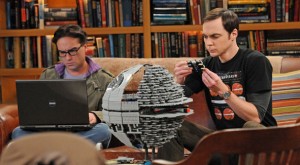I’ve been reading about Adult Fans of LEGO, (AFOL) and their extraordinarily successful and engaged online community, LUGNET in the book Groundswell. The AFOL community also uses Flickr extensively, sharing snapshots and commenting on each other’s creations.
The name LEGO is an abbreviation of two words: “leg” and “godt”. In Danish, “leg godt” means “play well.” Founded in 1932 by Ole Kirk Kristiansen, LEGO started as a small carpenter’s workshop, growing into a modern, global enterprise that is now the world’s fourth-largest manufacturer of toys.
I don’t know where the LEGOs my sisters and I played with as children are. It was a long time ago. I’m sure they were given away or donated somewhere. I wouldn’t have the space to store them now, but after reading about AFOL, I do feel a bit nostalgic that I don’t have them anymore.
One of the best introductions to AFOL is the wonderful video “AFOL A Blockumentary.” The video is a series of interviews with several AFOLs in the Pacific Northwest, many of whom hold influential positions within the community. One of my favorite segments of the video is when Mark Neumann, founder of BrickCon says:
No, it’s not a kit. No, it’s not for sale. No, there’s no instructions. Yes, I did it myself.
Neumann is referring to what looks like an astonishingly complex LEGO vehicle contraption which he created (you can watch the video and judge for yourself what exactly it might be), but those four sentences seem to encapsulate what it’s all about for the entire community.
The Pacific Northwest has the BrickCon convention, and Seattle-based users group SEALug . There are only three meetups devoted to AFOL at the moment, located in Deerfield, IL, Calgary and Singapore. Somehow I get a sense that number will only grow. At present, there are two LEGOLAND amusement parks in the U.S. (Florida and California), and three more in Europe: Denmark (Billund), England (Windsor), and Germany.
Mentions of LEGO abound in the media and in popular culture. For example, Mythbusters has a video segment devised to test whether a giant LEGO ball can roll down a hill and crush a car. (According to them, it can’t.) Journalist Jonathan Bender started a blog about his journey into the world of AFOL called BrickBender, and wrote a book based on the blog titled “LEGO: A Love Story.”
A recent episode of The Big Bang Theory featured a full size Star Wars LEGO Death Star, presumably built by the character of Sheldon Cooper, the show’s awkwardly anti-social physicist and self-described genius.
It would be tempting to think that Dr. Sheldon Cooper represents the “typical” AFOL. While conceding that AFOL usually have an engineer-type mentality with some creativity thrown in, Wayne Hussey, the Director of the BrickCon Lego users group, also concludes:
I don’t think there is a definition of an Adult Fan of Lego. It’s just, you’re an adult, you like to build with LEGO, and…it’s okay.
The LEGO website has the requisite social networking area for kids, but also an extensive array of pages for grown-up users, including create and share, message boards, a club, galleries of completed LEGO creations, a Design by Me section, and even a Star Wars gallery. Educators get their own page, too.
As if its own website didn’t have enough options, LEGO has also been advertising a separate website, buildtogether.com for parents and kids to work on LEGO projects together.
What do you think about the AFOL community’s enthusiastic use of social media? Do you still have your LEGOs? If you don’t, do you wish you still had them?
Image credit: Shelley Panzarella
Connect with Giuliana on Google+
Categories: Social Media
Tags: #AFOL, #nyusm, Lego, social media




10 Comments to LEGO: It’s not just for kids